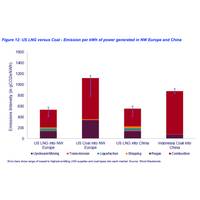Demand for Subsea Vessels to Accelerate
Douglas-Westwood (DW) anticipates subsea vessel demand will experience accelerated growth in the coming years at a rate of 7% CAGR. In DW’s new World Subsea Vessel Operations Market Forecast, global subsea vessel operating expenditure is set to total $122 billion (bn) during 2015-2019.
Report author, Chen Wei, commented, “Average vessel days are expected to become more expensive due to increasing demand for higher specification assets as field developments move towards deeper waters, as well as more stringent customer requirements for inspection repair & maintenance (IRM) work. The subsea vessel industry is currently experiencing a major build cycle with over 54% of the active fleet delivered over the past eight years. There are also an additional 115 vessels under construction, an order book to fleet ratio of 21%.
“Field development and IRM will remain the primary drivers of global subsea vessel spending. The field development sector is expected to see high growth at 10% CAGR between 2015 and 2019 with a total spend of $45bn and vessel demand of over 184,000 days. The IRM sector will account for 39% of spend over the 2015 to 2019 period with a growing installed base of offshore infrastructure combined with a requirement for higher specification vessels driving 9.5% CAGR.
“Asia will be the single largest market with 20% of global expenditure in the next five years, mainly driven by shallow water IRM and pipelay-related activities. Deepwater Gulf of Mexico, West Africa and Brazil are expected to account for 40% of global expenditure. Africa alone is set to represent 16% of the market, with the majority associated with deepwater field developments in both traditional Gulf of Guinea markets, such as Angola and Nigeria, as well as the new Indian Ocean growth markets of Mozambique and Tanzania (East Africa). Australasia has the fastest growth rate of all regions with a CAGR of 21% through the forecast period, due to a backlog of high profile gas developments intended to support the region’s ambitious LNG export commitments.”













